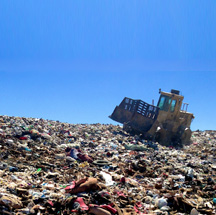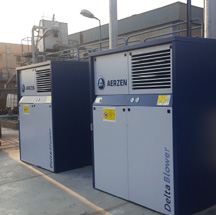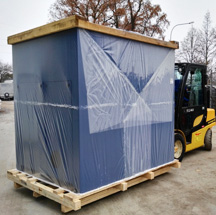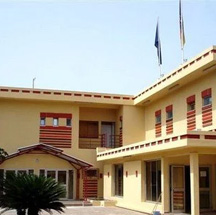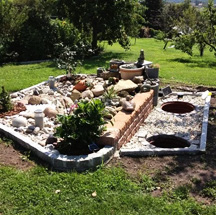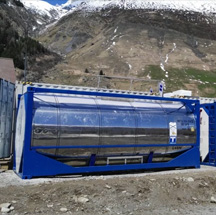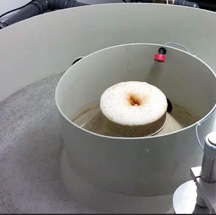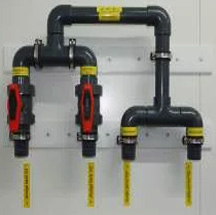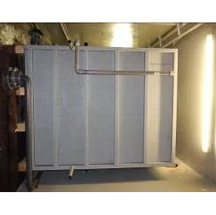HOME | WASTEWATER & RECYCLING | INDUSTRIAL WASTEWATER TREATMENT | FISH INDUSTRY
ClearFox are specialists in the design and manufacture of plug and play modular solutions for fish processing wastewater. Our technical ability and experience make us the best choice for your project.
The advantages of Clearfox are:
We have a range of process technologies that can be combined in a modular arrangement to deal with any type of fish processing wastewater. These include pre-treatment, dissolved air flotation, biological treatment, clarifiers, disinfection.
Due to the potential for high chloride concentration in fish wastewater we utilise duplex steel for all metal parts in contact with the wastewater. We can also incorporate ultrafiltration to allow the wastewater to be recycled and used as process water.
ClearFox modular industrial wastewater solutions have the following advantages:
- Low operation costs
- Modular
- Automatic operation
- Low purchase price
- Process and effluent guarantees
Application Description:
Fishing industry wastewater is highly contaminated. The degree of pollution of a wastewater depends on several parameters. The most important are the type of operation being carried out, the fish species being processed and the operating routine in the factory.
Examples are: fresh fish processing, delicatessen processing (crayfish, crabs, calamari, oysters etc) freezing process, salmon substitute production, canning and herring processing. This Industry is high seasonal.
Wastewater composition:
In general, the wastewater contamination fluctuates, with a high percentage of organic material (undissolved remains, greases, cooking oils, proteins, spices, vegetables
as well as sugar, vinegar) and with high concentrations of salt, chlorine, cleaning, colouring and disinfection agents.
Processing effluents have high amounts of contaminants such as TSS, biological oxygen demand (BOD), chemical oxygen demand (COD), fat, oil and grease (FOG) as well as nitrogen and phosphorus.
Wastewater Characteristics:
Water plays a key role in Fish processing industry. It is used in every step of the technological lines, including cleaning and washing, disinfection, heating and cooling. Water requirements are huge.
Wastewater categories:
The three major categories according to their origin and composition are:
1. Processing water:
There are often strong fluctuations in flow rates depending mainly on the plant operations. Effluent’s can be split into 2 categories, high salinity waste waters from the products or the utilisation of seawater in part of the process and low salinity waste waters, where fresh water is used and no salinity is produced as a by-product.
2. Cleaning wastewater:
Cleaning wastewater usually comes from washing equipment which is in direct contact with the product. It also includes product spillage, pressing and brine, CIP effluents or equipment malfunction and even operational errors. These effluents are in large quantities and are highly polluted, thus requiring further treatment.
3. Sanitary wastewater:
Sanitary wastewater is found in lavatories, shower rooms, etc. Sanitary wastewater is similar in composition to municipal wastewater and is generally piped directly to sewage works, but it can be used as a nitrogen source for unbalanced effluents before a secondary aerobic treatment.
Contact us for a free quotation
Do you have a question or need more information about a sewage treatment plant? We shall be happy to develop a suitable solution to your specific requirements.
Please call us on 01629 363311 or use the form below.
CONTACT US
Industrial Wastewater Treatment
Examples of applications that have the potential to generate waste water include, but are not limited to the following industries:
- Food processing
- Agricultural processes
- Breweries
- Wineries
- Mining
- Wash water from any activity and process effluent
Clearfox is a recognised market leader in the design, manufacture and supply of industrial wastewater treatment plants and industrial wastewater treatment process development. We provide intelligent solutions for industrial wastewater treatment:
- ensuring that they meet the stringent discharge compliances
- to recover and recycle water that can be reused in:
- cooling towers
- irrigation
- washing water
- process water
- to recover and recycle water from municipal sewage



